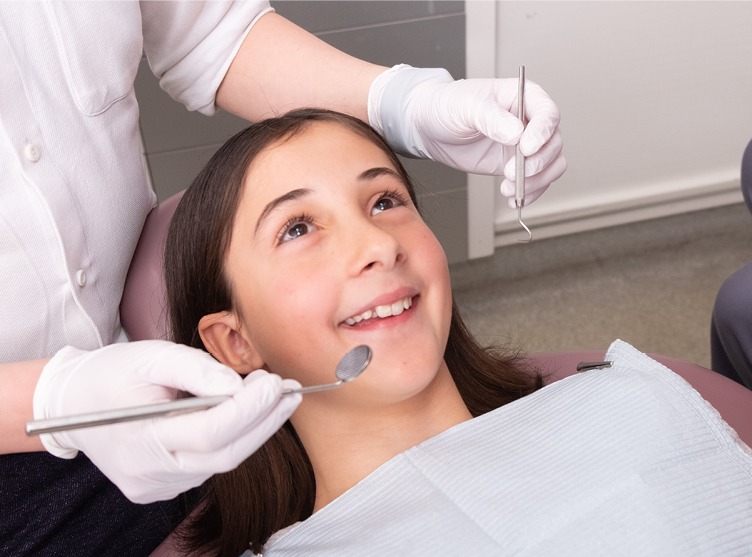A Biased View of Legacy Orthodontics
A Biased View of Legacy Orthodontics
Blog Article
A Biased View of Legacy Orthodontics
Table of ContentsNot known Facts About Legacy Orthodontics10 Simple Techniques For Legacy OrthodonticsSome Known Factual Statements About Legacy Orthodontics Legacy Orthodontics Can Be Fun For AnyoneThe Ultimate Guide To Legacy Orthodontics
In enhancement, we offer flexible therapy routines, versatile repayment options and an enjoyable, enjoyable experience.An orthodontist is a dental professional educated to diagnose, avoid, and deal with teeth and jaw irregularities. Orthodontists function with people of all ages, from youngsters to adults.
Malocclusion, or misaligned teeth, can lead to oral issues, including dental cavity, periodontal illness, and challenging or unpleasant chewing. Yet not everybody is birthed with straight teeth. If you have a negative bite or huge rooms between your teeth, you may intend to seek advice from a dentist focusing on orthodontic treatment.
What Does Legacy Orthodontics Do?
( Picture Debt: DigitalVision/Getty Images) Orthodontists use fixed and removable dental devices, like dental braces, retainers, and bands, to alter the setting of teeth in your mouth. Orthodontic therapy is for oral irregularities, including: Misaligned teethBite troubles, like an overbite or an underbiteCrowded teeth or teeth that are as well much apartJaw misalignmentThe goal of orthodontic treatment is to improve your bite.
A healthy and balanced bite ensures you can eat, chew, and talk appropriately. While you might think about orthodontists as mainly for kids or teenagers who require dental braces, they can remedy dental issues at any kind of age. Orthodontists attend college, oral college, and orthodontic school. After graduation, they spend 2 or 3 years in an orthodontic residency program.
All orthodontists are dental experts, however not all dental practitioners are orthodontists. Orthodontic residency programs supply extensive, focused instruction for dental professionals. They focus on two locations: Exactly how to effectively and safely move teeth Just how to properly lead growth in the teeth, jaw, and faceOnce an orthodontist has actually finished training, they have the alternative to come to be board certified.
The Single Strategy To Use For Legacy Orthodontics
Malocclusion leads to tooth overcrowding, a misshapen jaw, or uneven bite patterns. Malocclusion is usually treated with: Your orthodontist affixes steel, ceramic, or plastic square bonds to your teeth.
Some people need a headgear to aid relocate teeth right into line with stress from outside the mouth. A retainer is a customized device that maintains your teeth in place.
They can develop additional area in the mouth without having to pull teeth. Orthodontists use wires, medical screws, or plates to sustain your jaw bone.
You may need to see an orthodontist if you have: Crowding or otherwise adequate room for every one of your teethOverbite, when your upper teeth come your bottom teethUnderbite, when your bottom teeth are as well far forwardSpacing or issues with gapsCrossbite, which is when your upper teeth fit behind your bottom teeth when your mouth is closedOpen bite or an upright space in between your front base and top teethMisplaced midline, when the facility of your bottom and upper teeth do not line up Correcting an oral malocclusion can: Make attacking, eating, and speaking easierImprove the symmetry of our face and your overall appearanceEase discomfort from temporomandibular joint conditionsSeparate your teeth and make them much easier to clean up, helping avoid tooth decay or cavities It's usually a dental expert who initially notices misaligned teeth throughout a regular test.
Not known Incorrect Statements About Legacy Orthodontics

Throughout your initial orthodontic consultation, you'll likely have: An oral examPhotos taken of your face and smileDental X-raysPanoramic (360 level) X-rays of your face and headImpressions to produce molds of your teethThese examinations will aid your orthodontist understand exactly how to wage your treatment. clear braces. An orthodontist is a dental practitioner who's had training to treat your teeth and jaw
Orthodontists may perform surgical treatment, exams,X-rays,and even more to help you obtain a much more comfortable, much healthier smile. An orthodontist is concentrated on your bite, so something like a broken tooth would be handled by a dental professional. Orthodontists are dental practitioners yet not all dentists are orthodontists. Orthodontists are concentrated on your bite, or the way your teeth fit with each other, and the straightness of your teeth.
Ever before wondered exactly how celebs always appear to have flawlessly lined up teeth? Orthodontists are oral professionals that focus on correcting irregularities in the teeth and jaws.
Legacy Orthodontics for Beginners

While braces are one of the most typically recognized orthodontic therapy, orthodontists have a varied toolkit at their disposal. check this The certain approach selected depends on the seriousness of the situation, the client's age, and specific choices. These tried-and-true braces utilize a system of braces adhered to the teeth and connected by cables.
Clear aligners, like Invisalign, are a popular alternative for clients looking for a much more very discreet therapy option. These removable trays are customized to progressively move the teeth's setting. Headgear might be made use of together with dental braces or aligners to apply added targeted pressures, especially for correcting jaw disparities. In instances of narrow jaws, palatal expanders can be used to produce area for proper tooth alignment.
Report this page